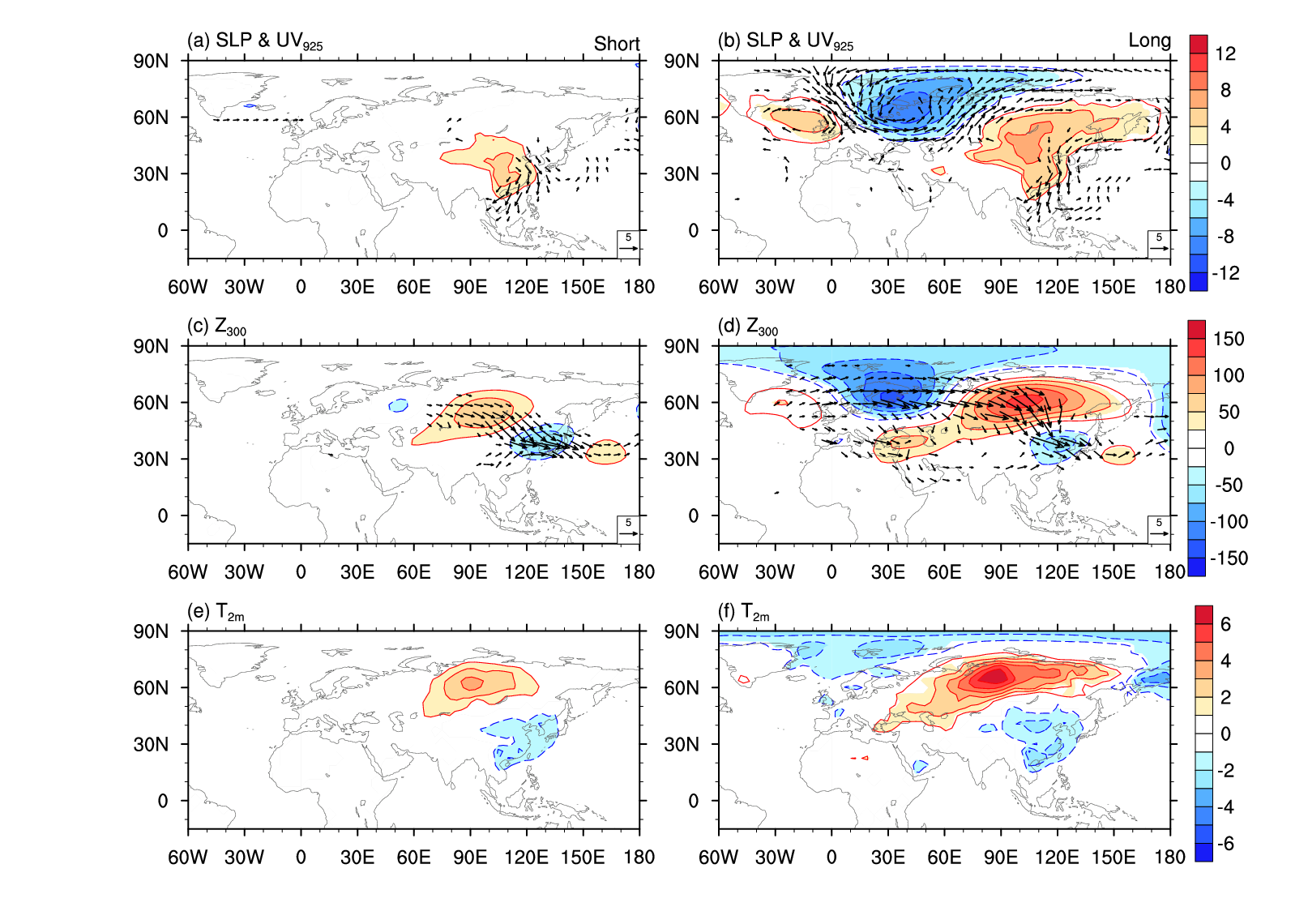Teleconnection from North Atlantic Contributes to the Persistence of Cold Surges over the South China Sea
Date:2022-01-21
Cold surge over the South China Sea is known as a typical but hazardous weather phenomenon during the boreal winter. It exhibits important socioeconomic effects on adjacent countries. In general, cold surge is characterized as a transient disturbance, which keeps its strength for only one or two days. However, it is reported that some cold surges can persist for a much longer time, even two weeks. Such long-lasting cold surges pose a severer threat to human society than a transient cold surge outbreak.
Recently, a study by researchers at the Institute of Atmospheric Physics, Chinese Academy of Sciences, China, shows evidence that the distinct extratropical circulation anomalies responsible for the short-lived and long-lived cold surges. The result shows that the Scandinavian (SCA) pattern is responsible for the persistence of long-lived cold surges, which is absent in the short-lived ones.

Figure 1 Circulation anomalies relevant to the onset of short (left) and long lived cold surge events over the South China Sea. (Image by IAP)
This study, which has been published in Journal of Climate, found that nearly 80% long-lived cold surges over the South China Sea are preceded by a negative phase of quasi-stationary SCA pattern. Furthermore, the connection is mainly conducted by facilitating blocking occurrence through the extensive anticyclone over central Siberia.
"This work has an implication for the extended weather forecast." The lead author Dr. PANG Bo said, "The teleconnection originated from North Atlantic can affect weather phenomena over the South China Sea."
Reference:
Pang B., R. Lu, and R. Ren, 2021: Impact of the Scandinavian pattern on long-lived cold surges over the South China Sea, Journal of Climate, https://doi.org/10.1175/JCLI-D-21-0607.1.
Media contact: Ms. LIN Zheng, jennylin@mail.iapa.c.cn
